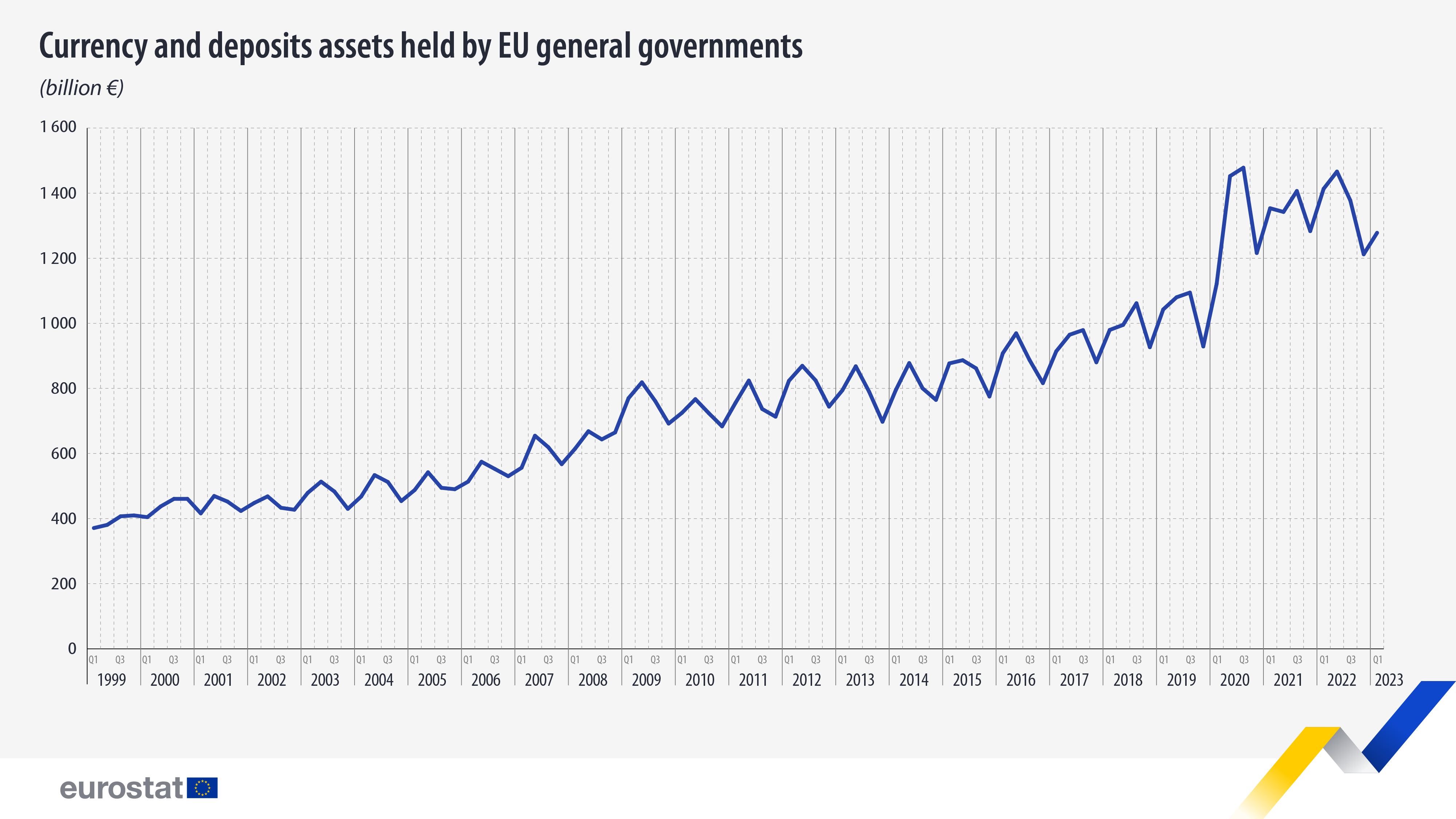Government finance statistics: currency & deposits

The general government financial accounts published by Eurostat cover transactions in financial assets and liabilities as well as the stock of financial assets and liabilities.
Governments hold currency and deposit assets (stocks) such as money in bank accounts and cash reserves to make daily payments. In the first quarter of 2023, currency and deposits amounted to €1 278 billion and represented 19.5% of total EU general government financial assets.
This information comes from data on quarterly government finance published by Eurostat today. The article presents a handful of findings from the more detailed Statistics Explained article.
Currency and deposit assets tend to decline at the end of the fourth quarter of each year. In some budgetary systems, there are efforts to execute payments by the end of the year, thus shortening the balance sheet. With excess deposits, governments can also decrease their gross debt, for example, by (re)purchasing government bonds. Holding excessive cash reserves implies foregoing opportunities to hold other assets (with a higher yield).
During the beginning of the COVID-19 pandemic in the first half of 2020, governments increased their deposit assets substantially due to the net incurrence of debt liabilities exceeding the financing of the deficits. Deposits made up 23.1% of total financial assets at their peak in the third quarter of 2020. The reduction in deposits observed in the last two quarters of 2022 mainly reflects the use of the liquidity accumulated over the previous years to finance the deficits.
Source dataset: gov_10q_ggfa
For more information
- Statistics Explained article on quarterly government finance statistics
- Thematic section on government finance statistics
- Database on quarterly government finance statistics
- Database on government finance statistics
Methodological notes:
- In the European System of Accounts (ESA 2010), most assets and liabilities are valued at market value. This means that the stock of financial assets and liabilities fluctuates due to transactions, but also due to "other flows", notably revaluations (nominal holdings gains and losses).
If you have any queries, please visit our contact us page.

